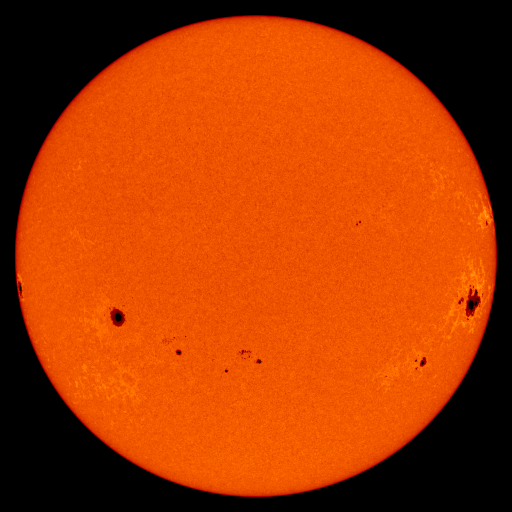
aug-22-02,sun spot (our sun) 69,(right side) will generate a large solar x flare soon.
Posted on 08/22/2002 10:11:17 PM PDT by green team 1999
Supernova poised to go off near Earth
10:30 23 May 02
Exclusive from New Scientist Print Edition
A student at Harvard University has stumbled across the terrifying spectacle of a star in our galactic backyard that is on the brink of exploding in a supernova. It is so close that if it were to blow up before moving away from us, it could wipe out life on Earth.
(Photo: SPL) Most supernovae occur when large stars run out of fuel and then collapse under their own weight. As atoms in the star are squeezed together, they rebound outwards, blowing off energy in a dazzling and dangerous display lasting several weeks.
But this one is different. Called HR 8210, it is a humble white dwarf, a star that has run out of fuel and should be too small to produce a supernova. But it may not stay that way. First, it is not alone, but is orbiting a companion star in a typical binary system. And it is 1.15 times the mass of our Sun, which for a white dwarf is a whopper.
The system was first logged in 1993 but little attention was paid to it. Then when Harvard student Karin Sandstrom investigated HR 8210 for a college paper this year, she discovered that it is only just shy of the Chandrasekar limit - the mass at which it would be big enough to go supernova. That makes it the best and by far the closest supernova candidate discovered so far.
The crunch will come when HR 8210's companion begins to run out of fuel. As it expands to form a red giant star, its outer layers will be dumped onto HR 8210, pushing it over the Chandrasekar limit. "Our initial idea was that this might happen very soon," says Sandstrom's supervisor Dave Latham.
Too close for comfort
But do not panic yet. "Very soon" could mean hundreds of millions of years in the future. And that is just as well, because we are only 150 light years away from HR 8210 at present - well short of the 160 to 200 light years thought to be the minimum safe distance from a supernova. If it did let fly, the high-energy electromagnetic radiation and cosmic rays it released would destroy Earth's ozone layer within minutes, giving life little chance of survival.
This would not be the first time a supernova has changed the course of life on Earth. In 2001, Jesus Maiz-Apellaniz and colleagues from the Space Telescope Science Institute in Baltimore, Maryland, found a "smoking gun" supernova remnant, in the group of stars known as the Scorpius- Centaurus association.
The timing of the supernova corresponds to an otherwise mysterious deposit of heavy isotopes in deep Earth cores and to a mass marine extinction two million years ago. At the time, Scorpius-Centaurus was around twice as far away from Earth as HR 8210 is now.
Fortunately, it will take time for HR 8210 to accumulate the mass it needs. Preliminary calculations by Rosanne di Stefano at the Harvard-Smithsonian Center suggest this may take hundreds of millions of years. By that time it will be much further away, she says, though she still needs to confirm exactly how far. "I want to be sure I'm right."
But will similar stars threaten us before then? "The fact that there's such a system so close to us suggests maybe these objects are not so rare," says Latham.
Eugenie Samuel
for information and discusion only,not for profit etc,etc.
Still, I'm not buying an green bananas ...
I hope an astronomer Freeper will help me out here, but I thought stars that are massive enough to become supernovae - a small number, comparitively - have very short lifespans, sometimes as short as only a few hundred thousands years. An star with "average" mass (such as our own), by comparison, has a lifespan of 5 to 10 BILLION years.
And where would it be "accumulating mass" from? Its stellar binary partner, perhaps?
Not that anyone would care in a million years, let alone until she confirms it, but I guess it's a 'hood that
NASA might think about twice about before colonizing.
I don't intend to [panic]. My "guide" has "DON'T PANIC" on it in nice big friendly letters.

aug-22-02,sun spot (our sun) 69,(right side) will generate a large solar x flare soon.
This doesn't sound correct. We're 8 light-minutes from our sun and we still have an ozone layer. This other object is 150 light-years away and it can focus more energy on us than the sun?
Disclaimer: Opinions posted on Free Republic are those of the individual posters and do not necessarily represent the opinion of Free Republic or its management. All materials posted herein are protected by copyright law and the exemption for fair use of copyrighted works.